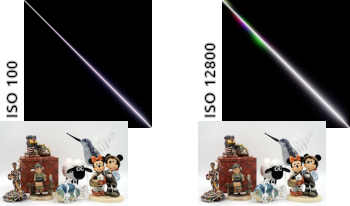
Increasingly sophisticated algorithms, including trained artificial intelligence methods, are now widely employed to enhance image quality. Unfortunately, these algorithms often produce somewhat hallucinatory results, showing details that do not correspond to the actual scene content. It is not possible to avoid all hallucination, but by modeling pixel value error, it becomes feasible to recognize when a potential enhancement would generate image content that is statistically inconsistent with the image as captured. An image enhancement algorithm should never give a pixel a value that is outside of the error bounds for the value obtained from the sensor. More precisely, the repaired pixel values should have a high probability of accurately reflecting the true scene content. The current work investigates computation methods and properties of a class of pixel value error model that empirically maps a probability density function (PDF). The accuracy of maps created by various practical single-shot algorithms is compared to that obtained by analysis of many images captured under controlled circumstances. In addition to applications discussed in earlier work, the use of these PDFs to constrain AI-suggested modifications to an image is explored and evaluated.